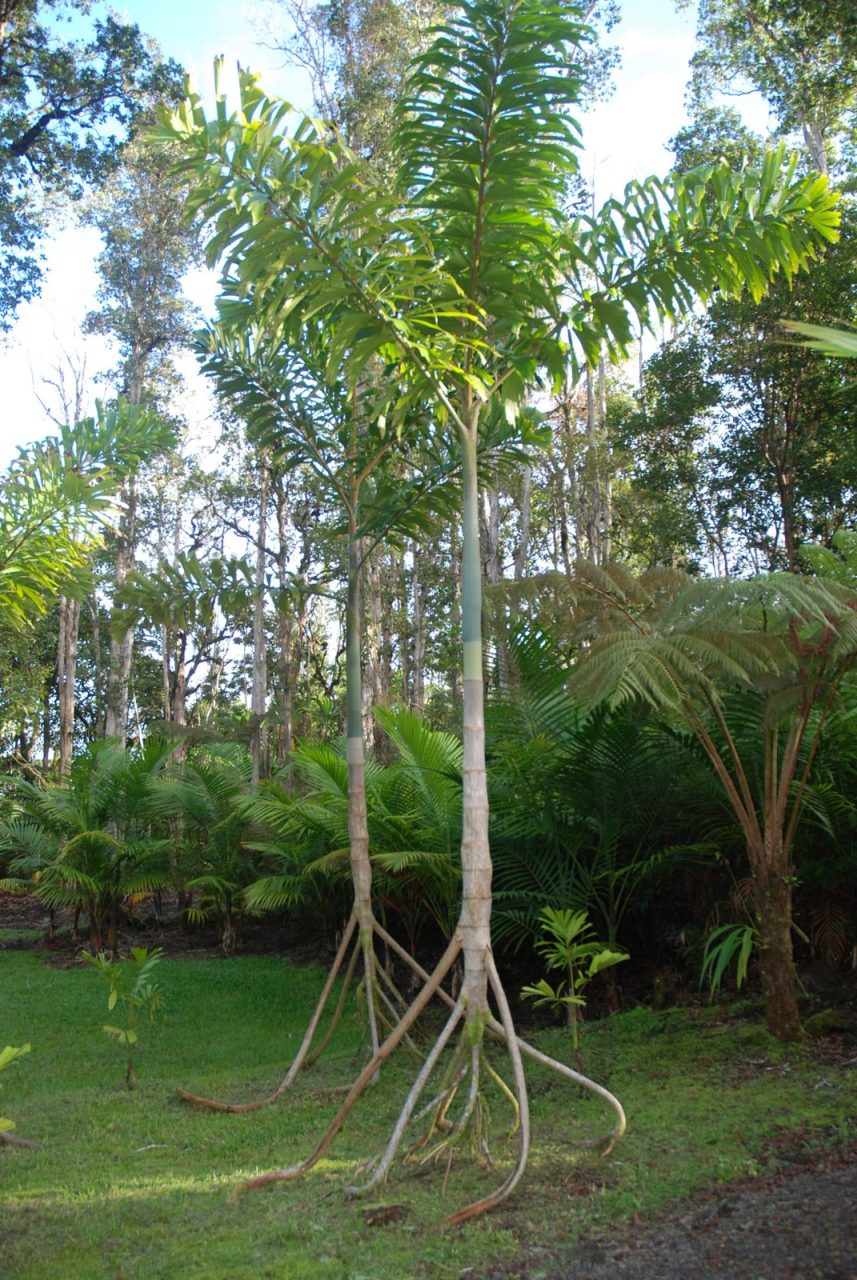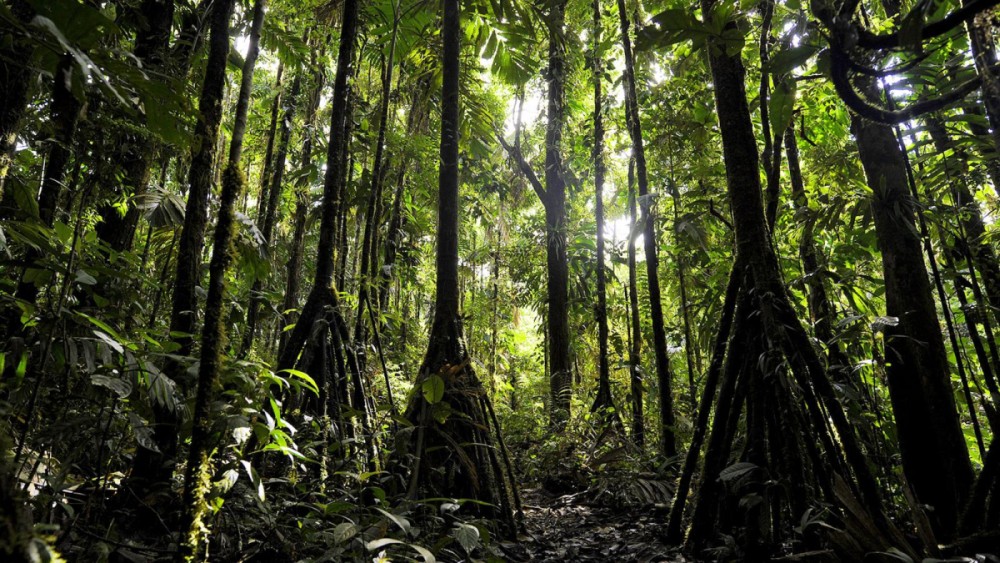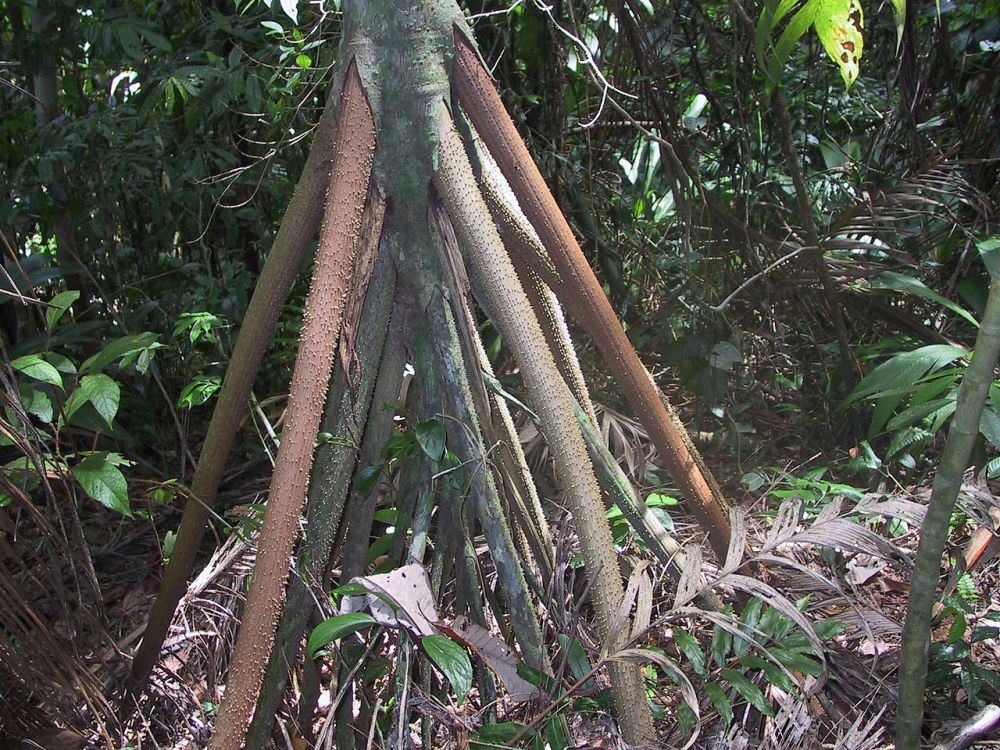A species of palm tree is perhaps the only mobile tree on this planet.
 Image source: Reddit
Image source: Reddit
Socratea Exorrhiza, a tree that grows in a remote part of Ecuador can, reportedly, walk – yupp, like Ents do in The Lord of the Rings. OK, these leafy giants might not be able to wage war on the forces of Isengard, but they definitely have a thing or two in common with their fictitious counterparts, apart from their size. Their complicated system of roots is thought to serve as legs, helping the tree constantly move towards sunlight as the seasons change.
Apparently, these walking trees can move up to 2-3 cm per day, or 20 meters per year. That may not sound like much, but it’s quite a marathon by tree standards!
 The mysterious trees remind the visitors of Tolkien’s creations. Image credit: Peter Vrsansky
The mysterious trees remind the visitors of Tolkien’s creations. Image credit: Peter Vrsansky
Rainforest guides in Ecuador have long been telling tourists about the incredible walking trees. The most commonly told story is that the tree slowly ‘walks’ in search of the sun by growing new roots towards the light while its old roots are left to die.
John H. Bodley suggested in 1980 that it’s the tree’s stilted roots that allow Socratea Exorrhiza to “walk” away from the point of germination. Whether that’s true or not, the tree’s unusual roots, split from the trunk a few feet above the ground, definitely add to the illusion of the tree having legs.
“As the soil erodes, the tree grows new, long roots that find new and more solid ground, sometimes up to 20m,” explains Peter Vrsansky, a palaeobiologist from the Slovak Academy of Sciences who worked for a few months in the Unesco Sumaco Biosphere Reserve, about a day’s journey from Ecuador’s capital Quito. “Then, slowly, as the roots settle in the new soil and the tree bends patiently towards the new roots, the old roots slowly lift into the air. The whole process for the tree to relocate to a new place with better sunlight and more solid ground can take a couple of years.”
 According to some scientists, it is the tree’s stilted roots that allow it to ‘walk’. Image credit: Ruestz
According to some scientists, it is the tree’s stilted roots that allow it to ‘walk’. Image credit: Ruestz
Other scientists, however, are of a different opinion. According to a 2005 paper by biologist Gerardo Avalos, director of the Center for Sustainable Development Studies in Atenas, Costa Rica, although Socratea Exorrhiza trees do occasionally produce new roots, they stay firmly planted in one place. The fact that they sprout new roots doesn’t mean they use them to move around.
“My paper proves that the belief of the walking palm is just a myth,” Avalos told Live Science. “Thinking that a palm tree could actually track canopy light changes by moving slowly over the forest floor … is a myth that tourist guides find amusing to tell visitors to the rainforest.”
But then, why all the confusion? Ultimately, it all seems to come down to that unique stilted root system. The ‘walking’ trees of Ecuador have a higher root system than other trees, starting near the bottom of their trunks. This makes the trees look more like an upright, walking broom than an actual tree. And, as the soil around them erodes, some of these weird-looking roots die off, leaving space for new roots to form.
 Its unique root system makes the Socratea Exorrhiza look like an upright, walking broom. Image credit: Ruestz
Its unique root system makes the Socratea Exorrhiza look like an upright, walking broom. Image credit: Ruestz
So, after all, it’s probably the special look of these trees that has made tour guides cook up the story of them walking, to add a bit of spice to their lecturing. This conclusion is further underlined by the fact that, if you do a quick search, you won’t find any time-lapse videos showing one of these trees actually ‘walking’. (If you do find one though, please don’t hesitate to let us know.)
That said, there are other plants species, if not trees, that can actually move from one place to another. The Creeping Devil cactus, for example, can actually crawl across the desert.
Sources: Earthlymission.com








